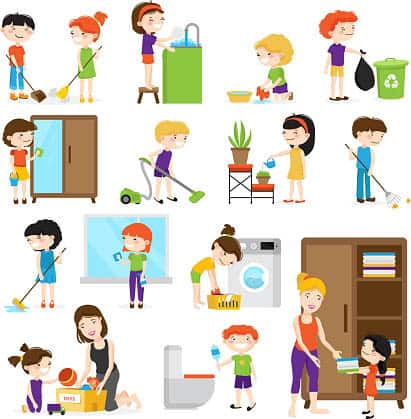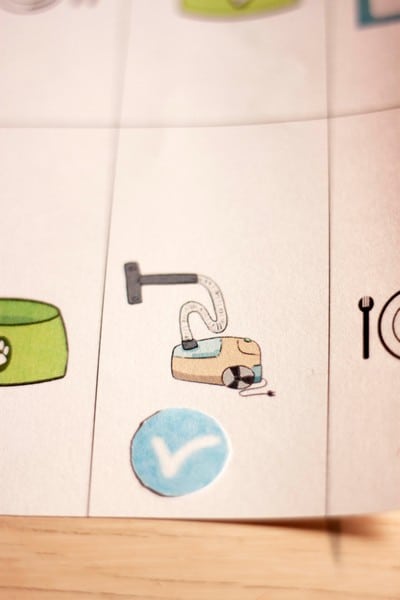I think every mom is a little relieved when her children start helping with chores apart from generating them. Let’s be honest – we love them but sometimes we wish we could just go to the office and rest. If you want your kids to do chores regularly a good chore chart is crucial.

My children started helping me when they were about one year old with a chore they liked – filling the washing machine and then taking out the wet laundry. When they were year and half they were already helping to set the table. One plate after another but they were helping. We try to teach them chores as a part of their life and they like knowing what expects them that day (same like with school schedules).
Here are my tips for a chore chart that is effective and really works.
Table of Contents
Make it clear
Help your children understand the chore chart and their responsibilities in it. You can start with a basic rectangle table printed on paper or drawn on a whiteboards. Every child should have a column or a row with their name. Make the chores easily understandable, written for older kids, in pictures for younger one.
Make shorter charts for smaller children (weekly, ideally) so they don’t feel overwhelmed.

Make it age-appropriate
The chores should be appropriate to the child’s age. Don’t let your child do something that you know they cannot do and start with just one chore a day. I have good experience starting with chores the children like, for example feeding the dog. Also, little children like watering the plants (sometimes too much) and all kids should do chores that have to do with them. Small children can pick up their toys, older ones can fold their clothes.

Think about the rewards
It helps the children to see their progress throughout the chart and to know there will be a reward. It doesn’t have to be money or sweets. Especially for small children it can be a reward enough if they can cross out their chore themselves or put a smiley sticker on it. I have made two sets of stickers for you, you just need to print them on a sticker sheet and cut them out.
![]()
You can motivate older children with pocket money or the participation on an event they are looking forward to.

Place the chore chart visibly
Make sure your child can see the chore chart at all times. Children benefit from routines and they like to make sure they know what’s next. We put our chart on the fridge, another great place would be a cork board on the wall.
The chore chart is an important part of the organization of our home. How do you organize your chores?